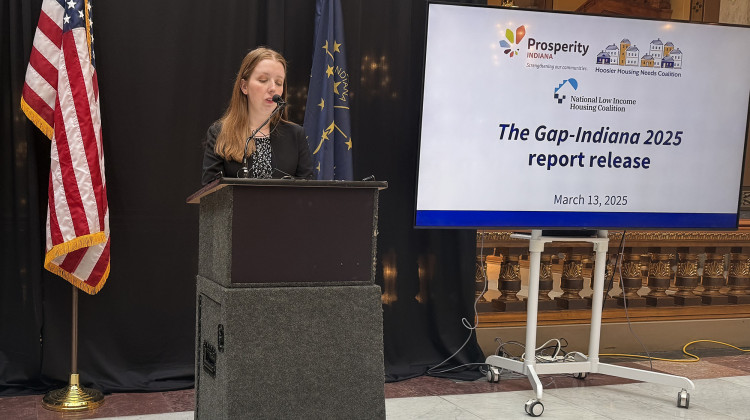
Indiana ranks 27th overall in the 2023 edition of AARP's Long-Term Services & Supports State Scorecard. That's up from 41st in the last edition, released in 2020.
FILE PHOTO: WFIU/TIUIndiana is one of the most improved states on AARP’s scorecard measuring long-term care for older people and those with disabilities.
Still, AARP said that care is “painfully inadequate” nationwide, with major gaps in every state.
The new report from the advocacy group ranks states on several criteria. That includes affordability, access, safety and quality.
The Hoosier State is 27th in the latest edition of the AARP scorecard, up from 41st in 2020, the previous version released by the group.
Indiana is best in providing what’s called “age-friendly” care for older people — it ranks no. 1 among all 50 states, with more than 300 health care sites designated as age-friendly.
Where Indiana still falls particularly short is providing support for family caregivers.
“Family caregivers come out of pocket with expenses that are really exorbitant,” said Rita Choula, senior director of caregiving at the AARP Public Policy Institute. “In fact, we know that family caregivers, on average, spend $7,200 out of pocket.”
AARP has recommendations for states to improve their access to long-term care. To better support family caregivers, the group proposes a tax credit to help offset out of pocket costs, a statewide mandate for paid leave to help care for family members, and unemployment benefits for those who leave their job to become family caregivers.
Indiana is also in the middle of a transition in state policy to emphasizing home and community-based services over nursing homes, something AARP strongly supports. Susan Reinhard, AARP public policy institute senior vice president, said as that shift continues, Indiana will likely improve further in the next scorecard, set to come out in three years.
Brandon is our Statehouse bureau chief. Contact him at bsmith@ipbs.org or follow him on Twitter at @brandonjsmith5.
9(MDAyMzk1MzA4MDE2MjY3OTY1MjM5ZDJjYQ000))
 DONATE
DONATE








 Support WFYI. We can't do it without you.
Support WFYI. We can't do it without you.